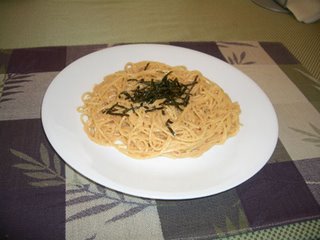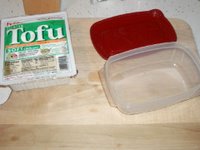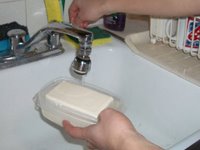I just came back from watching the flair bartending contest, since my brother's friend from HireusBartenders.com was competing. That's where bartenders throw bottles and glasses around as they make drinks. I've seen some bartenders at places like TGI Friday show their moves, but I've never been to an actual competition. Each bartenders had 6 to 7 minutes to showcase their moves. It was cool, but at the same time, 6 to 7 minutes was a really long time. My wife agreed, "it's kind of cool to watch, but if I was waiting for a drink and they were taking this long to make me a drink, I'd be pissed." She then mentioned that I might be good at this since I can do nunchaku (two wooden sticks tied together by chains). But then, I can't juggle worth crap, so who knows.
Tonight, I'd like to introduce miso soup. When we lived in Japan, and went clubbing every weekend at Roppongi and Shibuya, we usually stopped by Yoshinoya for miso soup. Nowadays here in the US, I probably eat miso soup two to three times a week. It's one of those things that I make on the side as I make a main dish. It's easy to make, and very good after night of hard drinking.
IN JAPANESE: Misoshiru
CATEGORY: Soup
COOKING METHOD: Boiled
DIFFICULTY: Easy
SERVES: 2 people
LENGTH OF TIME: 5 min
 INGREDIENTS:
INGREDIENTS:
1 heaping TBsp of miso (white or red)
1/2 tsp of bonito soup stock powder [hondashi] or kelp powder [konbu dashi] (about 2 shakes)
1 TBsp of dried seaweed [wakame]
1 Green onion finely chopped
1/8 pack of tofu diced (see TIP: Storing tofu)
HOW TO:
Using the bowl you will use to serve, fill with water about 3/4 of the bowl (amount you would actually serve). Place that water in a pan, repeat for two servings.
Turn the heat to high and put in your choice of bonito powder or kelp powder as well as the dried seaweed in the pan. As the water is heating up, dice the tofu, chop up the green onion and scoop a spoonful of miso.
When the water starts to boil, turn off the heat and place the pan on an empty burner (or set it aside where it's not hot), and put your spoonful of miso into a ladle and gently mix the miso with hot water so it dissolves into the water without leaving a big chunk. After all the miso is nicely dissolved, place the pan back on the heat and the turn it low.
Put the tofu and green onion in the pan and let it heat for a couple more minutes, and serve. If you don't like seaweed or tofu or green onion, you can replace with other things like daikon or fried tofu or a squash. Experiment and have fun with it.








